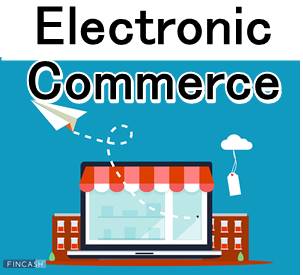
Table of Contents
Definition of Electronic Commerce
Blessing in disguise! You must have heard this phrase. And it suited for online businesses during the pandemic. While massive businesses were forced to shut down, this one stood during the thick and thin time. It expanded tremendously. Yes, you’re thinking right. It is none other than an online business, aka e-commerce.

During this pandemic, numerous people have accepted this change and actually appreciated online business. And now this is the new normal for shopping. According to a report, e-commerce is expected to expand by 12.2% in 2021. In this article, you’ll learn the definition, types, pros and cons of e-commerce.
Electronic commerce, known as e-commerce, is the activity of buying and selling products and services through the internet. It is operated on varied devices that include mobile, laptop, tab, PC and so on. Services are provided online either after the payment or before the payment, and the product is supplied to the owner as per the demand. There are different modes of payment that are acceptable.
Types of E-commerce
Mainly four types of E-commerce businesses are growing enormously:
1. Business-to-Consumer (B2C)
In this model of e-commerce, products and services are sold online straight to the end consumer through business. For example, Amazon and Flipkart. They sell the products directly to the end consumer.
2. Business-to-Business (B2B)
This means products and services are sold from one business to another business. For example, Amazon sells other business products on its site. That means they sell the product from the manufacturer or wholesaler to the consumer. The business done between manufacturers and Amazon is a great example of business-to-business e-commerce.
3. Consumer-to-Consumer (C2C)
Consumer-to-consumer e-commerce means buying and selling products from one consumer to another consumer. For example, if a person sells their cupboard to another consumer through online platforms like eBay or OLX, then it is known as the consumer-to-consumer model.
4. Consumer-to-Business (C2B)
Consumer-to-business e-commerce is a reverse model where consumers sell their product or service to the businesses. For example, when a photographer sells his captured images to businesses who want to use them on their website or in brochures, it is regarded as the consumer of the business model of e-commerce. Doing freelance work for companies is another example of the consumer-to-business model where freelancers sell their services of graphic designing, content writing, web development, etc.
Talk to our investment specialist
Pros and Cons of Electronic Commerce
Just like every coin has 2 sides, and everything has its pros and cons. E-commerce also has the same. Here is the list of pros and cons of it.
Pros
Doing business online has a lot of obvious and not-so-obvious advantages. You can use them to your advantage if you know exactly what they are. Here is the list of pros of E-commerce:
- The distance between a seller and a buyer has vanished. The location does not matter anymore. People from diverse locations can book their packages of services.
- The cost has cut down immensely as there are no physical shops and hence no Maintenance Expenses.
- E-commerce remains open 24x7, giving a choice to consumers to buy things from the comfort of their homes at the preferred time.
- There are no middlemen or merchants that leads to lowering cost and helps in delivering products or services swiftly.
- It is trackable as online sites can collect data to compile and analyze the reach of the website, how much it is user-friendly, which location has more target audience, what are their expectations and how much business has grown.
- One thing is certain: it will last forever since all companies were forced to close during the pandemic, yet this has had the opposite effect, with the Economy booming.
Cons
It's not all rainbows and unicorns when it comes to running an online store. This business model has its own set of problems, and understanding them can help you navigate the rough waters and avoid typical pitfalls. Here is a list of cons of E-commerce:
- Online fraud and leaking information are something online business owners are worried about. The cyber-attack is growing with the growing business of e-commerce.
- Diverse costs are added to this category. As people are heading towards the expansion of e-commerce, some things are holding them back that includes the different types of expenses that e-commerce brings. For instance, web development, app development, maintaining social media handles, and the list is never-ending.
- One thing that is growing more than e-commerce is the competition between these businesses. Yes, this Industry is highly competitive, and going with the trend is something consumers are looking for. Marketing is the only thing that can survive and grow this business from the competitors.
Conclusion
There are always pros and cons to everything. Having an online business is a good idea for those who want to thrive in this tough time as well. As e-commerce is expanding with a model to cater the diverse needs, you need to make a wise decision before selecting the business model and type. This platform has served countless peoples' and still serving, and it will serve for eternal time.
All efforts have been made to ensure the information provided here is accurate. However, no guarantees are made regarding correctness of data. Please verify with scheme information document before making any investment.




